In this Article
How many times have you bought a product because someone you know recommended it? Probably countless times.
That’s the power of a referral.
If you run a newsletter, one low-effort way to spread the word and grow subscribers is by tapping into your audience’s power using email newsletter referral programs.
In this article, we’ll dive into the value of newsletter referral programs, how to set up an effective campaign and share some incentive ideas for your mailing list.
What is a newsletter referral program?
A newsletter referral program is a system that rewards subscribers for sharing your newsletter with their network.
Rewards typically vary depending on how many people a subscriber refers. For example, three referrals may win subscribers a free ebook, while six referrals win them a tote.
Kit creators can use the newsletter referral app SparkLoop to set up a referral program.
What is the purpose of a referral program?
Referral programs help spread awareness about products or services. Even for newsletter creators, referrals are important for reaching new audiences. With a referral program, an enthusiastic subscriber can pitch you to their network in a single click.
More importantly, referrals get you solid leads from people who, like your subscriber, are genuinely interested in your offerings. Subscribers and referrals also do the hard work of explaining your offer and sending you ready-to-buy customers.
Reasons why creators should consider a referral program for their newsletters
It can take a little time to strategize and set up a program for newsletter referral, but the potential for growth is huge. Here’s what you stand to gain from adding a referral program to your newsletter.
Increase your subscriber count
Manuel Frigerio, co-founder of SparkLoop, shared that one creator gained 1,100 subscribers thanks to referrals. He also noted that newsletters grow, on average, 35% faster when creators use SparkLoop. Since you already have a relationship with your subscribers, they’re more likely to share your work and convince friends to join.
Find more people in your niche
Your subscribers likely know people like them, and offering an incentive to share your newsletter with like-minded friends helps you grow within a niche.
Increase engagement with content
Using content as an incentive for referring your newsletter is a cost-effective way to grow your list and drive traffic to your work. You can keep engagement high on evergreen content by using it as a reward.
Lower your cost of acquisition
Louis Nicholls, co-founder of SparkLoop, notes that newsletter referrals cost an average of $0.17 per subscriber versus $1-$3 from other acquisition channels. The combination of affordable incentives (like existing content) and an average referral conversion rate of 32% give this strategy its advantage.
Build anticipation for new content
Preparing for a big launch? You can offer early access to new content for referring a few friends. The allure of exclusive access, paired with the ease of sharing a newsletter referral code, makes this strategy an enticing offer for subscribers.
Boost sponsorship and co-marketing campaigns
Newsletter referral programs can also benefit your co-marketing or promotional partners. Sponsored giveaways give your program a fresh reward while increasing exposure for the company.
Budget-beating strategy for growing a small business
Most creators have to fund their passion projects out of pocket. An email newsletter referral program can help you build your business without spending a fortune on advertising.
Do newsletter referral programs work?
Newsletter referral programs definitely work to help creators grow their mailing lists.
In SparkLoop’s first year alone, it drove over 300,000 unique visitors using referral links, and over 30% of those visitors became subscribers. To put it in context, that percentage is more than two times the average landing page conversion rate.
4 examples of successful email newsletter referral programs
If you’re still not fully convinced, you’ll hear from five creators reaping the benefits of using a newsletter referral program.
Example #1 – Brennan Dunn’s Create and Sell
Email marketing expert, Brennan Dunn, teaches creators how to build and sell to an audience. He used Kit + SparkLoop to accelerate newsletter growth.
Newsletter referral program wins
Brennan used the Kit integration to set up his referral program in a few minutes and boosted list growth by 9.9%.
With tiered incentives, so subscribers at all levels of engagement had something to work towards. He also added an automatic referral progress bar at the bottom of every newsletter to gamify the process and show subscribers what’s up for grabs.

Tiered referral incentives give subscribers something to work towards. Image via Brennan Dunn.
Example #2 – Aleyda Solis’s #SEOFOMO
SEO consultant Aleyda Solis writes the #SEOFOMO newsletter to share SEO news, events, jobs, and resources with industry peers. She set up a multi-reward-milestone referral program to target two kinds of subscribers: those with a few connections and marketing influencers.
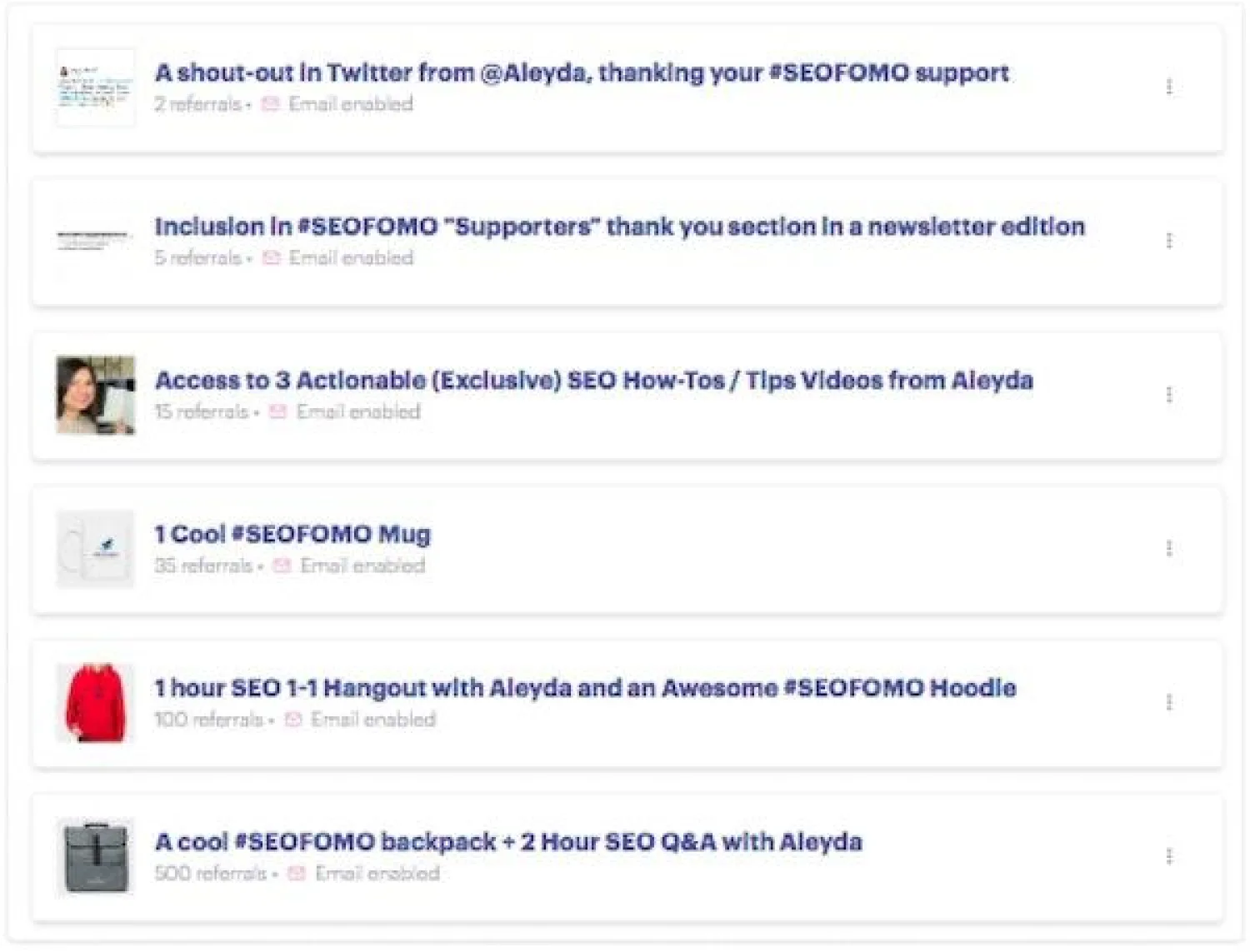
Using reward milestones, Aleyda creates a referral program that works for her two different subscriber avatars. Image via Aleyda Solis.
Newsletter referral program wins
In her first month of using SparkLoop, Aleyda saw a 255.9% rise in subscribers, with over 800 new referrals signing up.
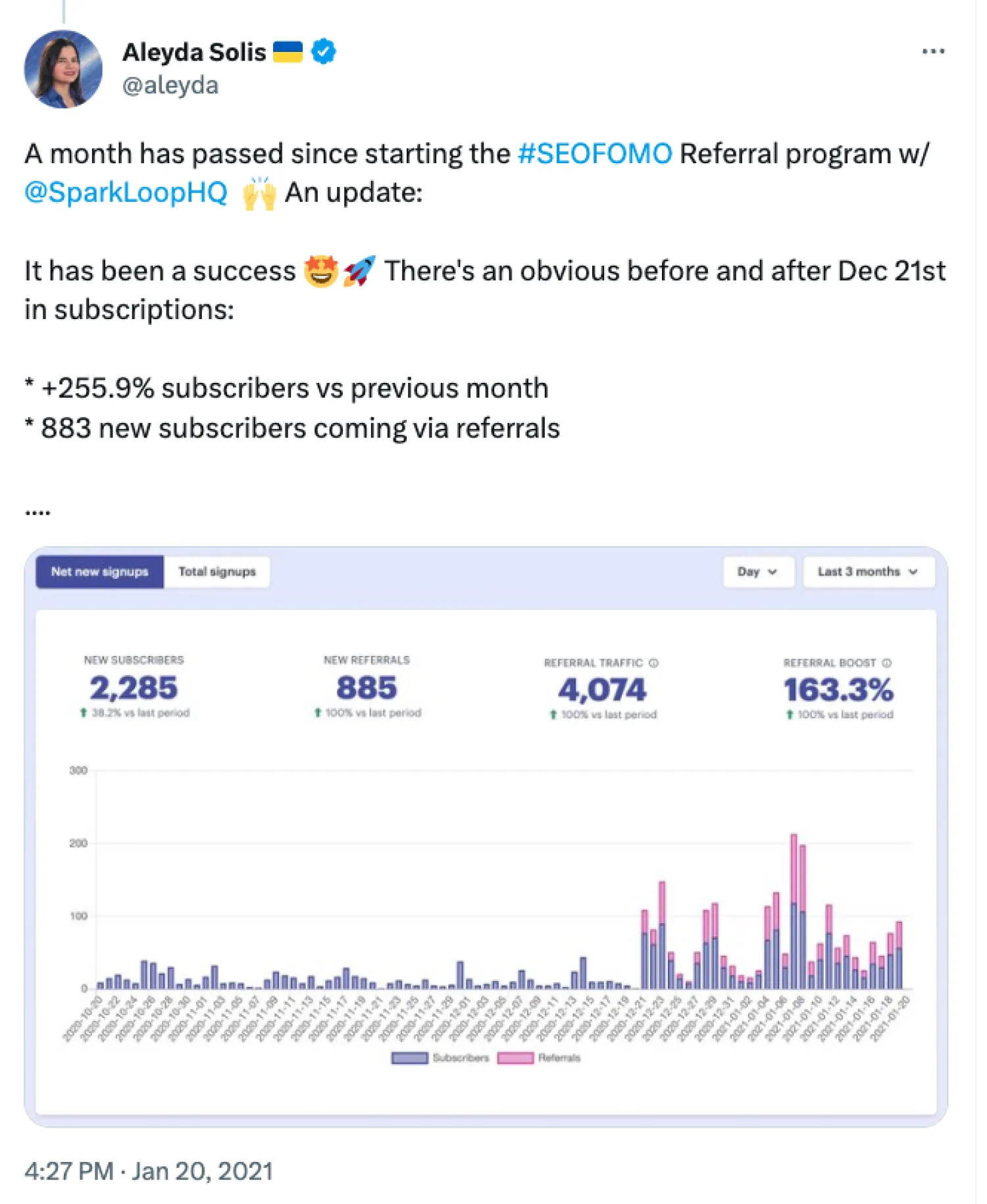
#SEOFOMO saw remarkable newsletter growth using a referral program. Image via Aleyda Solis on X/Twitter.
Example #3 – Jason Woodruff’s The Pour Over
Jason Woodruff is the creator behind The Pour Over, a current events newsletter for Christians. Jason turned his hobby into his full-time career through sponsorships and advertising, thanks to his referral program.
The Pour Over subscribers get free merchandise based on how many referrals they bring in. (With SparkLoop, this process is entirely automated, so you don’t have to worry about fulfillment.)
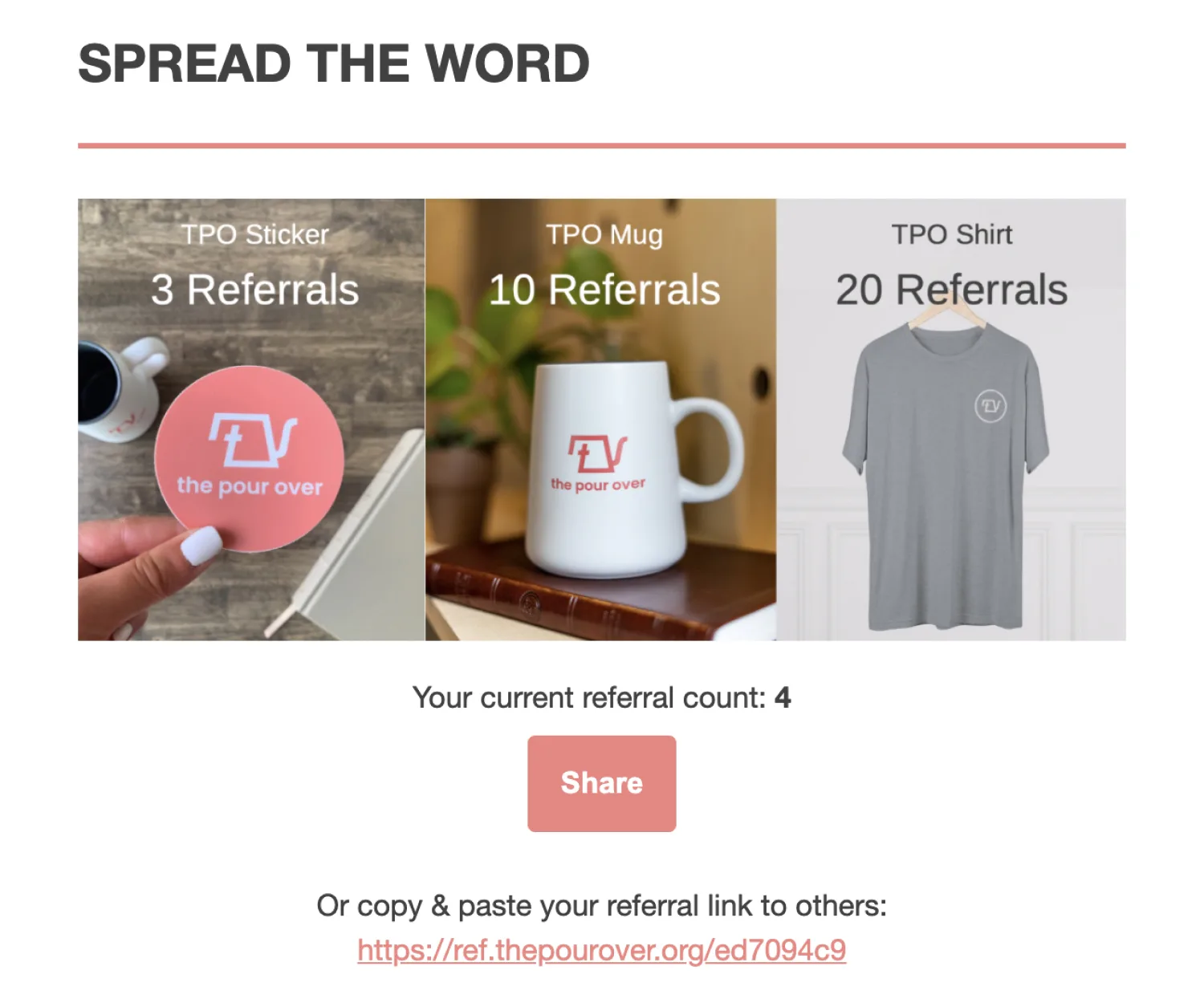
Incentivize subscribers with free merch in return for using your newsletter referral program. Image via The Pour Over.
Newsletter referral program wins
In less than a year, The Pour Over grew from 20,000 to over 100,000 subscribers, with referrals bringing in several thousand new signups every month. Best of all, they accomplished this with reduced spending on ads and other costly customer acquisition methods.
Example #4 – Jerod Morris’s Assembly Hall
Jerod Morris is the podcaster and YouTuber behind Assembly Call, the Indiana University basketball podcast and postgame show. They offer some sporty gear and access to a community as referral incentives.
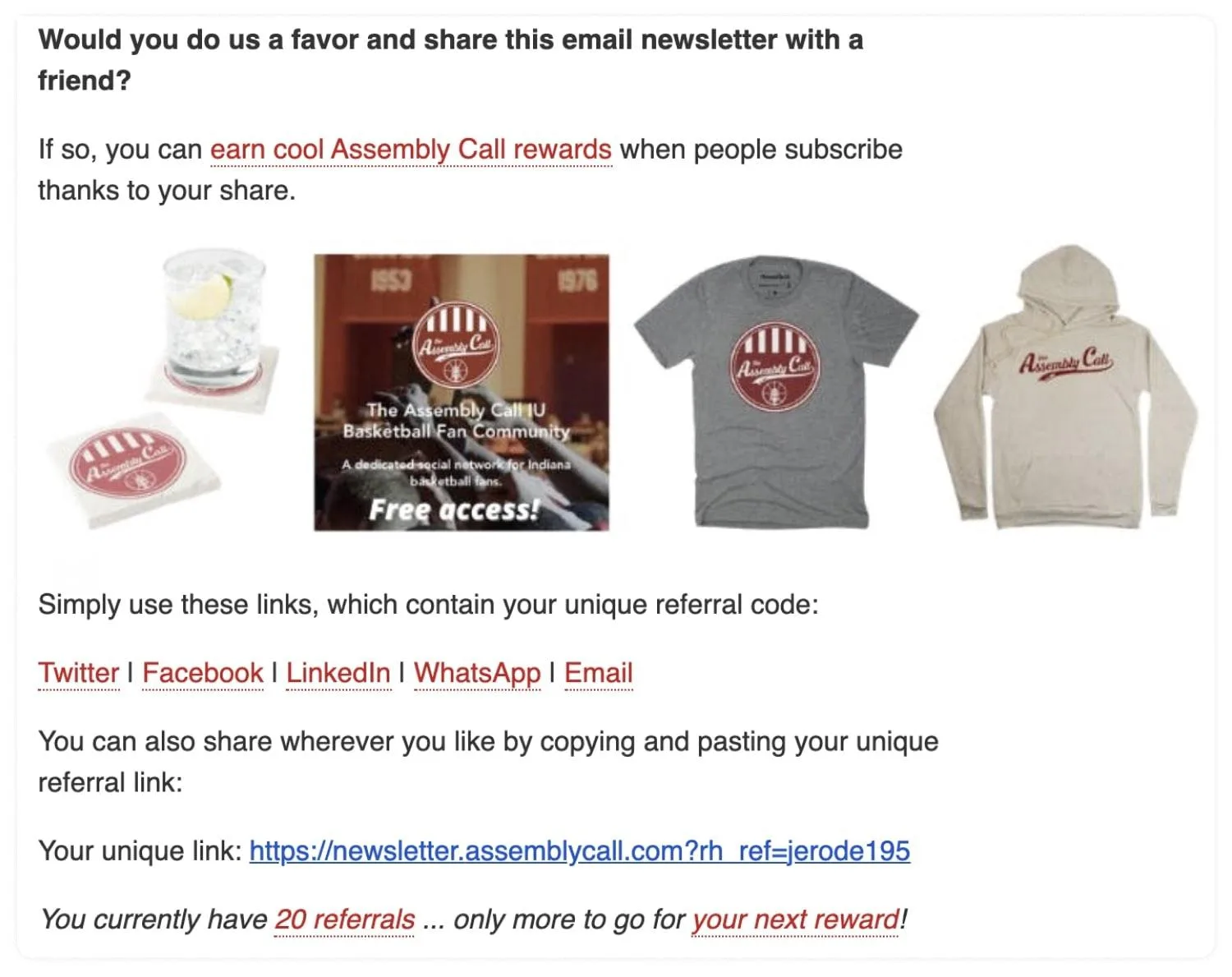
The referral CTA in each email makes sharing easy by automatically incorporating each subscriber’s unique share code into links to social sites.
Newsletter referral program wins
The referral program has grown Jerod’s mailing list significantly. A little over half of all his new subscribers come from referrals, which means his newsletter has grown 2X since implementing the strategy.
Tips on what your referral program needs to succeed
If you want to set up a newsletter referral program, there are a few decisions you need to make. Here are the five elements you need to get started.
A newsletter with measurable subscriber value
Newsletter referral programs work best for lists with pre-existing subscribers. You need to already have subscribers whose referrals you can benefit from. Still, the impact can vary depending on how engaged your audience is.
If you’re curious what kind of impact a referral program could have on your list, check out the SparkLoop growth calculator.
A strategy to tell subscribers about the program
Before they can use your referral program, people need to know it exists.
To start, you’ll need an automated message to introduce the referral program a week after someone joins your email list. It’s also helpful to have a call to action (CTA) at the bottom of every newsletter. People should know what they need to share, to whom, and why they should care.
An incentive (or set of incentives)
The prize you hand out for referring people needs to be affordable but worthwhile. Exclusive content, access to ebooks, private community access, Q&A webinars, and swag are all possible incentives. If you’re short on ideas, check out SparkLoop’s rewards library for inspiration.
A way to track referrals
If all goes to plan, your referral program will bring in so many new subscribers that you can’t keep them straight. An automatic referral program like SparkLoop paired with email automation means you don’t have to track who referred who and what rewards are earned manually.
A way to deliver incentives
The final step to automate is your incentive delivery. You can’t deliver swag instantaneously (even Bezos can’t do that).
Still, you can set up triggers to automatically send an email with access to digital products once subscribers hit a certain number of referrals. This step is a breeze with an integrated tool like Kit Commerce.
5 steps to set up and promote your referral programs
Step #1 – Choose your referral rewards and tiered system
You can offer multiple rewards through a tiered system where referrers receive more valuable incentives the more they refer. These tiers motivate subscribers to continue referring to unlock new levels.
Remember to choose rewards that your audience will appreciate. More on this below!
Step #2 – Create a landing page for your referral program
Through Kit, choose a landing page template and create a landing page discussing your referral program in-depth. Include:
- The different tiers of your referral program, including what the referrer unlocks in each tier and how many people they need to refer to move up to the next tier
- A section for FAQs to address common questions like “when will I receive my incentive?” (using Kit and SparkLoop, you can send the incentive automatically!) and “what if I refer more people than the top incentive plan?
- Instructions telling current subscribers where they can access their referral link (you can use the custom field {{subscriber.rh_reflink}} to send subscribers their unique referral link)
- A place for new subscribers to sign up for your list if they want to access your referral program
Step #3 – Connect your Kit Creator Pro account to SparkLoop
After creating your landing page, you’ll need to upgrade to a Kit Creator Pro account. Your Creator Pro account includes free access to SparkLoop—the tool you need to automate your newsletter referral program.
To help you with the integration, SparkLoop offers complimentary calls to walk you through the setup process!
Step #4 – Set up your automation
To deliver incentives automatically, you need to set up an automation within Kit. We’ve done all the work for you by creating this free automation template. All you need to do is click Use This Automation to copy it over to your Kit account.
If you want to see the setup process in action, check out the walkthrough below.
Step #5 – Promote your referral program
It’s time to start growing your email list! Use your unique link to share your new referral landing page with your newsletter, on social media, and on your website to announce your newest referral program!
Also, add information about your referral program into your welcome email sequence so regardless of how someone joins your list, they’ll be aware of your referral program.
Referral rewards: all you need to know
We’ve established that newsletter referral programs work regardless of your list size. But there’s one crucial factor for success: choosing the right referral rewards to motivate your audience. If you’re struggling to drum up ideas, we’ll share a few.
Simple newsletter referral incentive ideas
You don’t need to offer expensive or lavish rewards to entice subscribers to promote your newsletter. A study by the American Marketing Association found that the reward size doesn’t increase referral likelihood. All you need is to choose rewards your audience highly desires.
Discounts
Best for creators who: want to attract new customers and encourage existing customers to buy more.
RetailMeNot conducted a study and found that 80% of people will make a first-time purchase from a brand if they have a coupon.
Corey Haines, a marketer and entrepreneur, has nearly 7,000 subscribers on his list. He pairs discounts with free products to incentivize subscribers to pass his newsletter along to friends and colleagues.
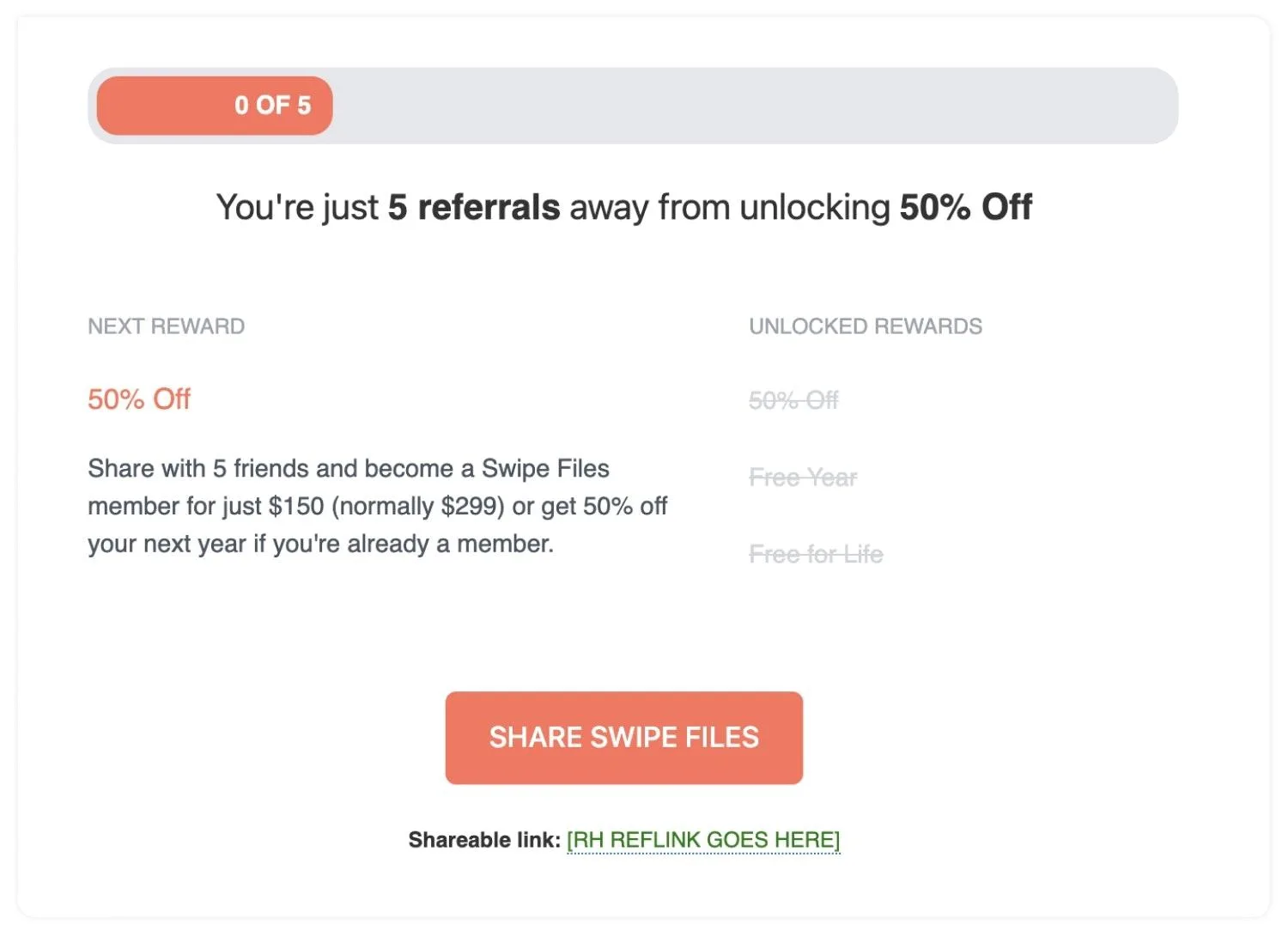
Corey uses a tiered system for his referral rewards. Image via Corey Haines.
Free product or merch
Best for creators who: have a list of loyal subscribers already buying their products.
Balancing free and paid content as a creator is tricky. But if your subscribers get used to getting things for free, they might not buy when you promote paid offers. That’s why this referral reward works best if you already promote paid products in your newsletter.
Justin Moore helps creators secure brand partnerships. He offers free products as incentives for his list.

Justin offers a combination of discounts and free products as referral rewards. Image via Justin Moore.
Store credit or gift cards
Best for creators who: want to increase sales for their ecommerce shop.
Gift cards and store credit can help you boost your revenue— consumers admit they spend more than the gift card’s value. Skincare brand Metrin, for example, offers $10 store credit to referrals and referees:
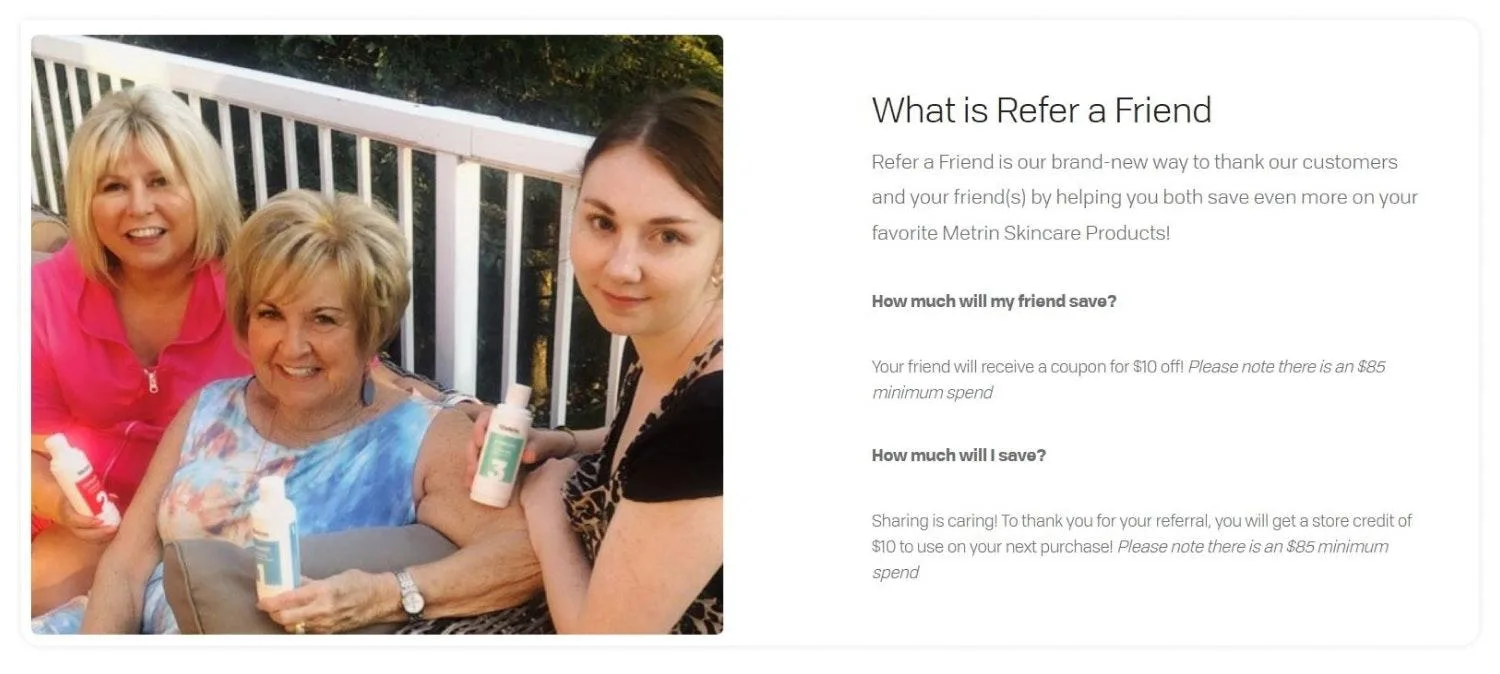
Giving store credit can boost sales overall. Image via Metrin.
Donations
Best for creators who: have built social programs and causes into their brand.
Donations and charitable work are effective referral incentives when your business is built around a shared social cause.
Last Object, a company with a mission to eliminate single-use items, plants trees after a certain number of referrals. This incentive aligns perfectly with Last Object’s eco-conscious customer.
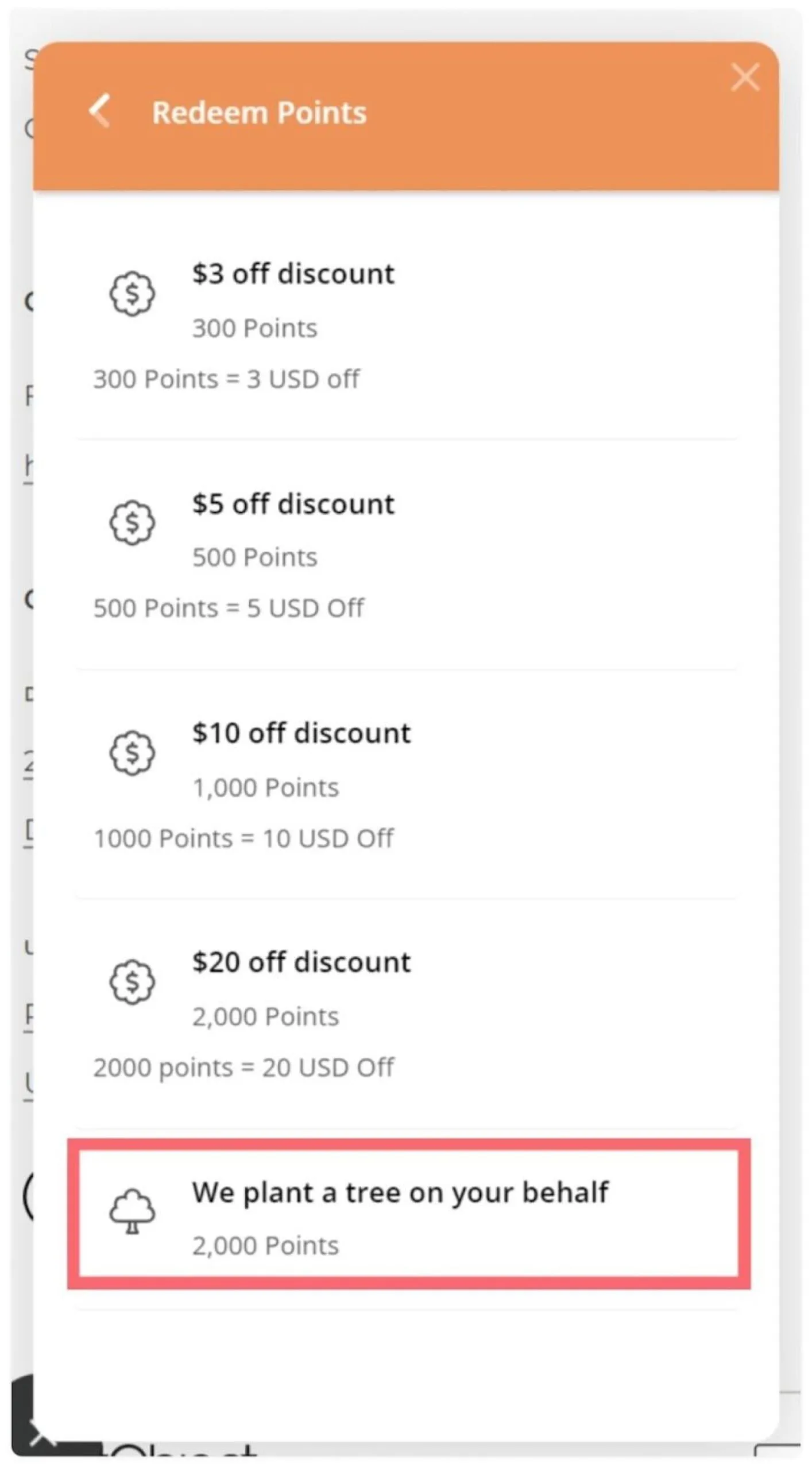
Work donations into your referral tiers just like Last Object. Image via Last Object.
Cash
Best for creators who: have an email list full of subscribers with a high lifetime value.
If you have an email list full of people buying high-ticket items from you, cash might be a referral incentive worth exploring. The lifetime value (LTV) of your email list is the amount you expect each subscriber to spend on your business.
Keep your cash incentive below your subscriber’s estimated LTV so you don’t spend more to acquire people than they’ll spend on your products.
An example of cash incentive is PayPal. PayPal offers up to $50 for people who refer their friends.

PayPal pays people who refer their friends. Image via PayPal.
Early access
Best for creators who: plan on launching new products or promotions.
If you have new products or promotions in the pipeline, build excitement by offering early access to loyal subscribers in exchange for referrals. As a bonus, you can collect feedback from people who sign up for early access to tweak your product and ensure a smooth launch!
ZigZagZurich gave referrers early access to their Black Friday sale on Thursday, dubbing it “Black Thursday”:
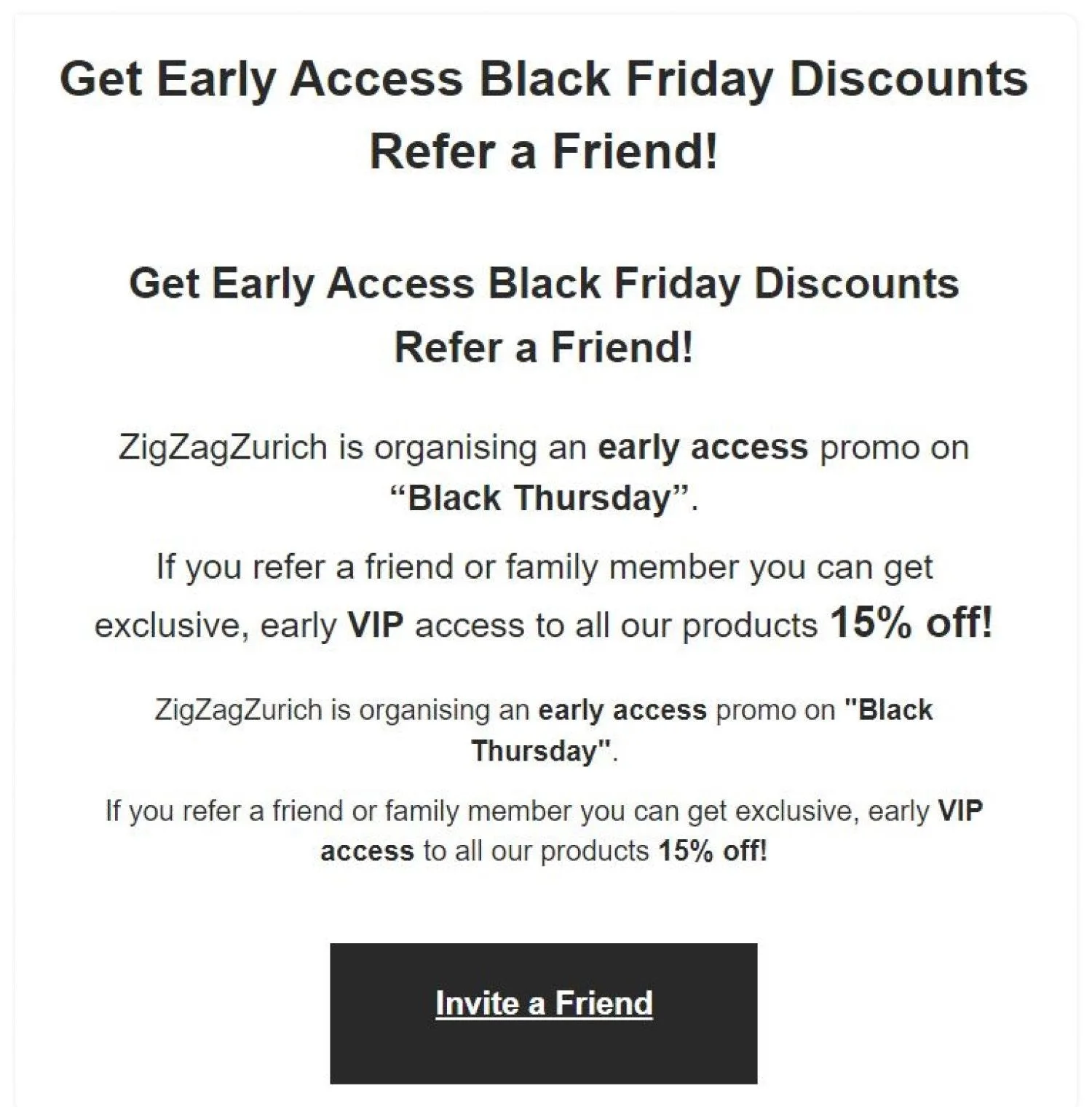
Give subscribers exclusive access to products and promotions. Image via ZigZagZurich.
Exclusive newsletter content
Best for creators who: share info-packed newsletters.
Using SparkLoop and Kit, you can hide exclusive content within your newsletters. Combine mystery with the fear of missing out to entice subscribers to refer. Here’s how Justin Moore hides exclusive content within his newsletter:
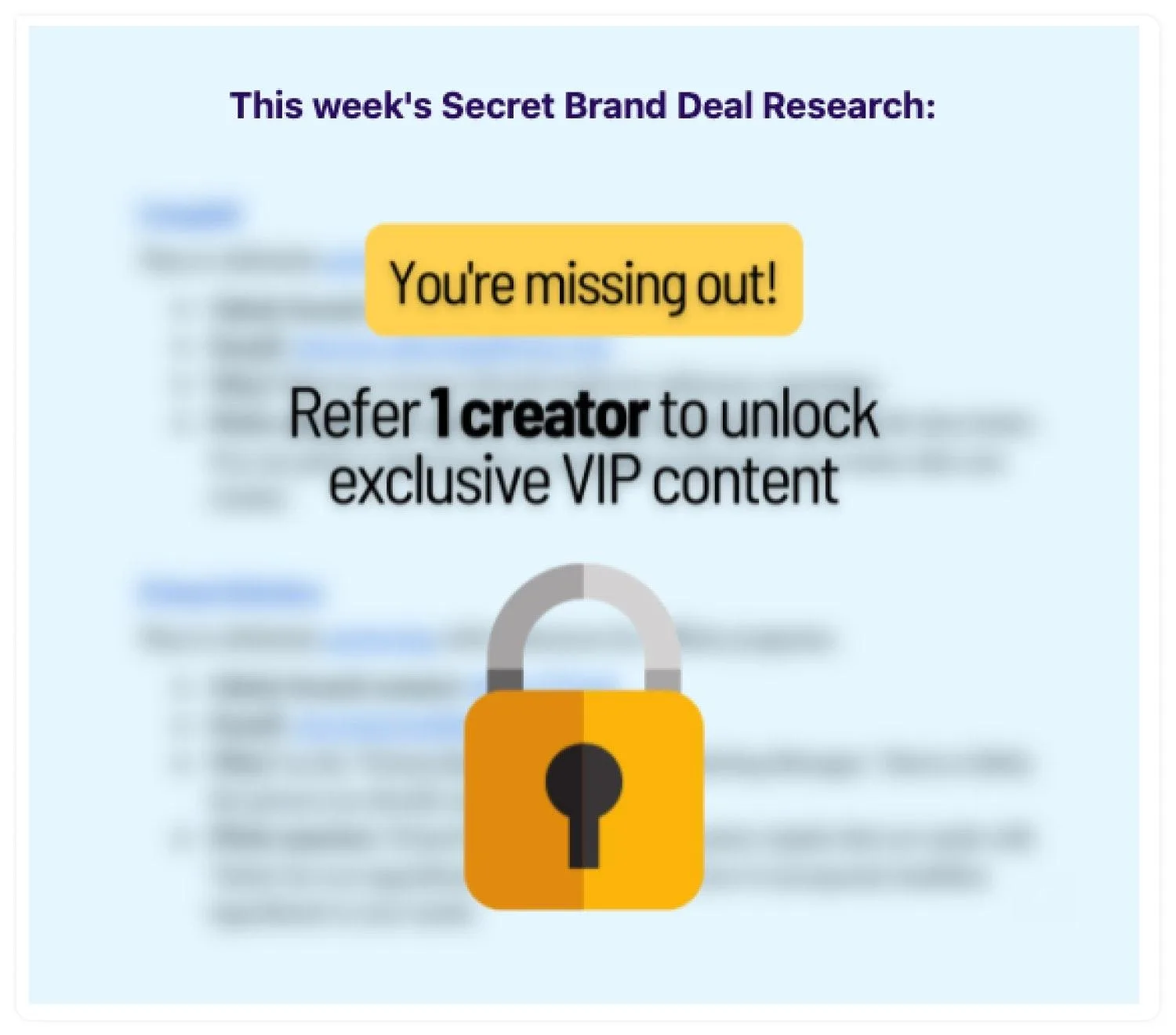
Justin Moore hides the exclusive content in his normal newsletters to further incentivize referrals. Image via Justin Moore.
Sponsored incentives
Best for creators who: work with brands for sponsored and promotional content.
Influencers who don’t sell products can still use referral programs. In traditional email newsletter sponsorships, your newsletter includes an ad for the brand, just like this snippet from CopyBlogger:
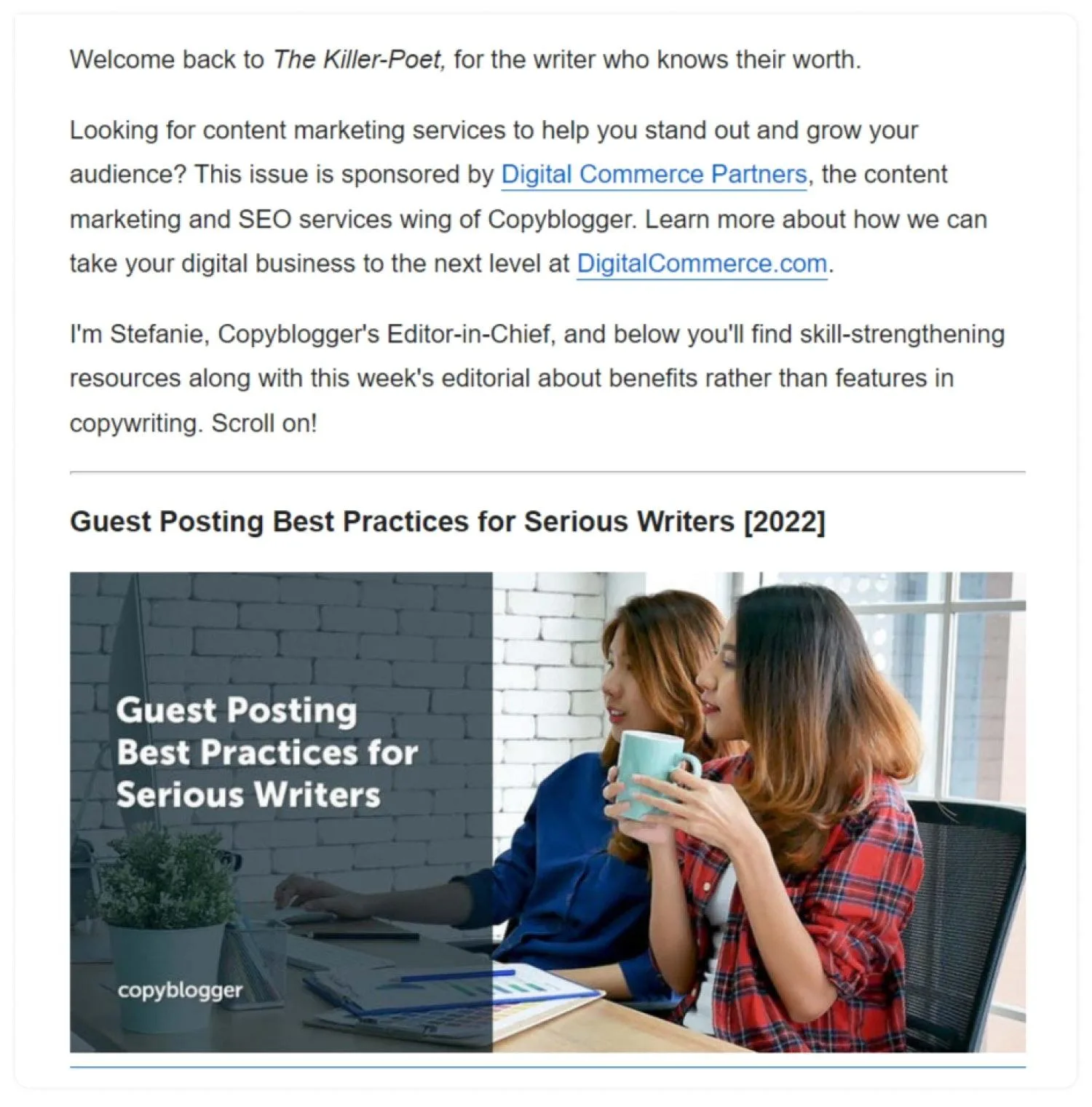
Copyblogger promotes Digital Commerce Partners in their email newsletter. Image via CopyBlogger.
With sponsored incentives, instead of offering a one-off newsletter sponsorship, one brand can sponsor the referral incentives of your list for a specific length of time.
Brands gain exposure to new audiences, and you get to save money and offer subscribers an incentive they’ll love—without making something of your own.
If newsletter sponsorships are too time-consuming to find or balance on your own, the Kit Sponsor Network can take the work off your hands. Kit helps creators with 10,000 or more subscribers find and earn from newsletter sponsorships. Learn more about the Kit Sponsor Network.
Selecting the best referral rewards for your business
The above referral rewards will motivate your audience to share your newsletter with their friends and colleagues, but how do you know which one to use for your business?
Take a look at your best-selling product
Your best-selling products hold clues to what your current—and future—subscribers want. After all, if they’re willing to pay for something, they’ll be extra excited to receive something similar for free.
If you sell digital products and courses through Kit Commerce, see which products sell best by going to Earn > Products. Under your product titles, you can see how many you’ve sold and how much money you’ve earned.
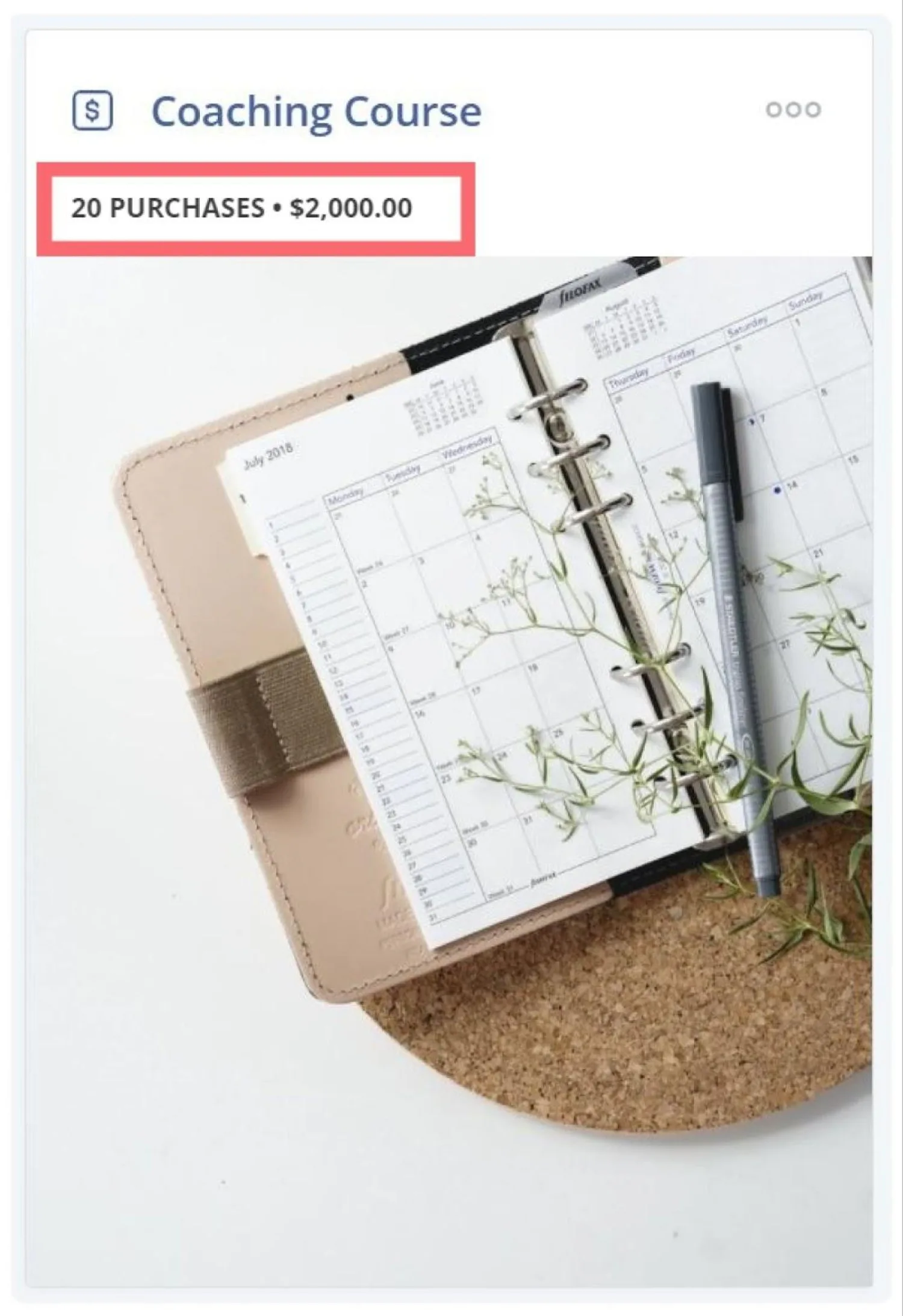
Kit Commerce shows you which products bring the most sales.
Look at Google Analytics to see which content brings the most traffic
If you don’t sell products, use your blog traffic to understand what topics interest your audience the most. Take a look at popular pages to figure out what offers might align with those topics.
To view your most popular pages, open Google Analytics and scroll down to Views by Page titles and screen class. Set the range to show enough data.

See your most popular content within Google Analytics.
See which freebies have the highest conversion
Another way to understand which incentives motivate your audience is to see which freebies/opt-ins have the highest conversion rates.
Within Kit, head to Grow > Landing Pages and Forms and look at which ones bring the most subscribers.

Find your highest converting opt-in in Kit.
Then, repurpose that freebie as a referral reward. Just make sure your reward offers additional value and is not the exact same as your freebie.
Poll your current list of subscribers
If you don’t have enough data to help you find an incentive after going through the above options, why not ask subscribers directly?
Run an internal survey using Kit and tags to uncover what incentives your subscribers would be the most excited to get!
Test and tweak different incentives
Don’t be afraid to change your incentives if you think something else might perform better.
Run tests for a few weeks at a time to see which offers bring the most referrals. By experimenting with different rewards along with different tier structures, you can uncover which works best for your business.
Starting your newsletter referral program
When a friend tells you to subscribe to a newsletter they think you’ll like, it’s an easy sell. But getting people to subscribe to your newsletter takes more work because you’re not their trusted friend (yet).
With a good program for newsletter referrals, you can turn one subscriber into two, three, four, and even more. Grow your email list with the newsletter referral program specifically designed for creators, SparkLoop. Get started today.


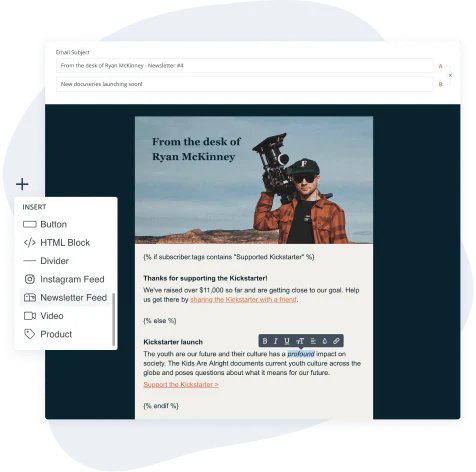

![How to build your first email marketing funnel [+ email pitch framework]](https://media.kit.com/post/HERO-first-email-marketing-funnel.jpg?fm=webp&w=320&q=70)
